Phantasmagoria
Part One: Primitive
Accumulation
Chapter Four
Curiosity Cabinets, World's Fairs, and Ethnographic
Museums
1.
The
material culture of indigenous peoples lies at the center of the three
situations of first contact with Europeans that we have discussed so far in this
book: the Spanish in the New World, the
Portuguese in Africa, and the English in
the South Pacific. It occupies that central position for two reasons. First, the
creations of native peoples were often coveted by Europeans as forms of wealth.
This is most clearly true in the case of Central and South America, but to some
extent it holds for Africa and Oceania as well. Second, many indigenous objects
expressed the beliefs and were integral to the practices of the cultures that
produced them. Insofar as they supported autonomous forms of life, they were
obstacles to conquest, colonization, and the exploitation of labor. The
destruction of Aztec art, Kongo minkisi, and Hawaiian temples and their
gods are three examples of the cultural holocaust that was required to subjugate
the native world.
As
expressions of communal freedom and potential rallying points of resistance,
indigenous objects, especially those with religious significance, were dangerous
to the Europeans who were carried to the four corners of the earth by the
expansion of the capitalist system. But the danger was fully active only in the
places where the objects originated. Once they were uprooted from their native
soil and transplanted in the West, they lost contact with the source of their
menacing power. Thus drained of their original energy, they could be subjected
to a new set of cultural practices. Many of the objects brought back to Europe
were incorporated into private and public collections where they were
catalogued, studied, and placed on display. In this fashion, they assisted at
the birth of such characteristically European institutions as the curiosity
cabinet, the ethnographic museum, and the world's fair.
2.
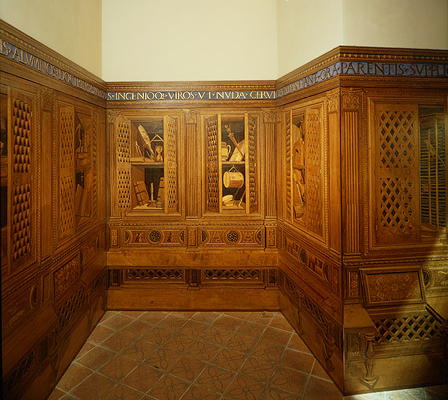 The primitive
accumulation of capital that lay at the origins of the modern world system in
the sixteenth century involved the transference of material resources from
Africa and the Americas to Europe. Among those resources were objects that are
now exhibited in museums and sold to collectors as works of indigenous art. The
objects reached their destination at a time when it was undergoing a complicated
process of cultural transformation. Much of Europe was fully in the grip of the
Renaissance. Though that movement was based on a rediscovery of Greek and Roman
sources of learning and models of visual representation, it was not merely
backward looking. It also clothed art with a grandeur that had no precedent in
either ancient or mediaeval times. Sculptors and painters made a successful
claim to a social status more elevated than that of ordinary craftsmen. They
shed their traditional association with crude manual labor and insisted that
their activities and products were equivalent in excellence to those of the more
highly regarded human studies, or “humanities,” such as grammar, history,
poetry, and philosophy. This bid for respectability on the part of visual
artists was accepted by a layer of the mercantile and financial bourgeoisie who
at first commissioned artworks for churches and public buildings as well as
private quarters, and then began to purchase already existing works in the
marketplace. And so art was converted into wealth at the very moment of its
birth.
The primitive
accumulation of capital that lay at the origins of the modern world system in
the sixteenth century involved the transference of material resources from
Africa and the Americas to Europe. Among those resources were objects that are
now exhibited in museums and sold to collectors as works of indigenous art. The
objects reached their destination at a time when it was undergoing a complicated
process of cultural transformation. Much of Europe was fully in the grip of the
Renaissance. Though that movement was based on a rediscovery of Greek and Roman
sources of learning and models of visual representation, it was not merely
backward looking. It also clothed art with a grandeur that had no precedent in
either ancient or mediaeval times. Sculptors and painters made a successful
claim to a social status more elevated than that of ordinary craftsmen. They
shed their traditional association with crude manual labor and insisted that
their activities and products were equivalent in excellence to those of the more
highly regarded human studies, or “humanities,” such as grammar, history,
poetry, and philosophy. This bid for respectability on the part of visual
artists was accepted by a layer of the mercantile and financial bourgeoisie who
at first commissioned artworks for churches and public buildings as well as
private quarters, and then began to purchase already existing works in the
marketplace. And so art was converted into wealth at the very moment of its
birth.
It
took more than four centuries for the creations of indigenous peoples to be
absorbed into the art market, but they too were viewed right from the beginning
as bearers of exchange value, embodiments of potential wealth. Only in their
case, that perception often led to the physical destruction of their aesthetic
form. Nearly everything made of gold or silver or encrusted with precious gems
was stored temporarily in the treasure houses of princes, bankers, and merchants
on its way to being dismantled or melted down. In a domestic repetition of the
way the conquistadors had treated Aztec artifacts abroad, the detached gems were
sold and the gold and silver converted directly into bullion. Fortunately some
objects escaped significant alteration because the materials from which they
were made were worth little if anything at all. If they were not shaped from
precious metals or composed of jewels, then the items were often left intact and
sold to collectors of curiosities.
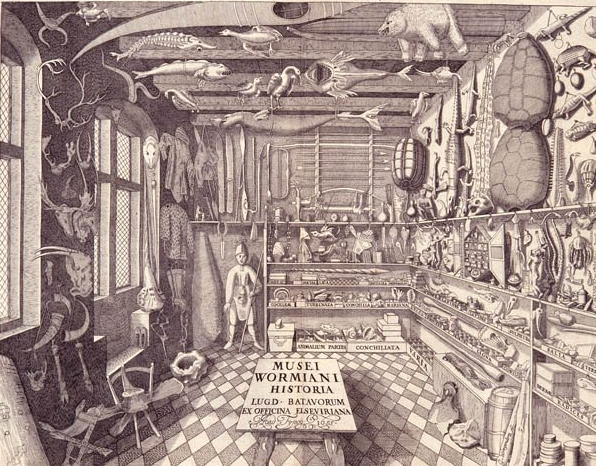
The
passion for collecting was also an innovation of the Renaissance. It is of
course true that people have collected in other cultures and in Europe
in earlier historical periods. But their
efforts always served some well defined ulterior social purpose such as
consolidating status or broadening kinship alliances through the exchange of
dowries and bride price. The Renaissance is innovative in that collecting
emerged as a relatively autonomous practice, one that may have brought prestige,
to be sure, but only because of its ability to make a plausibly disinterested
contribution to the store of knowledge. In particular, the earliest collections
were informed by the same thrill of rediscovering antiquity that powered the
Renaissance as a whole. They were comprised of statues and architectural
fragments uncovered through the excavations of Roman ruins that were conducted
from 1450 to 1550. From this classical starting point, collections soon
proliferated in bewildering diversity. Some enthusiasts concentrated on coins
and medals, others on books and manuscripts, and still others on zoological and
botanical specimens. There were collections of fossils, sea shells, mathematical
instruments, minerals, playing cards, anatomical oddities, cryptograms, watches,
and automata. By the early years of the seventeenth century, catalogues were
being published and fashionable trips abroad arranged for the sole purpose of
journeying from one collection to another.
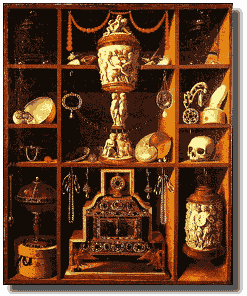 Most of the
collections were housed in the curiosity cabinets that had made their first
appearance in the sixteenth century. The Italian term is studiolo, the
French, cabinet de curiosites, and the German, Wunderkammer,
chamber of wonders. The German word, which is the most expressive of all,
indicates something of the aura of mystery
that enveloped the cabinets and their contents, at least at the time of the
Renaissance. The cabinets as physical containers ─ the term also referred to the
collections they housed ─ sometimes took the form of spacious closets or even
entire rooms. But they most often appeared as free standing cupboards
masterfully constructed from fine woods. In
the most sumptuous examples, they were made of ebony, inlaid with jasper and
lapis lazuli, draped with canopies studded with jewels, and decorated with
alabaster columns.
But whether princely or modest, the cupboards were elaborately sectioned
into shelves, drawers, partitions, niches, and other receptacles. Since many of
the
Most of the
collections were housed in the curiosity cabinets that had made their first
appearance in the sixteenth century. The Italian term is studiolo, the
French, cabinet de curiosites, and the German, Wunderkammer,
chamber of wonders. The German word, which is the most expressive of all,
indicates something of the aura of mystery
that enveloped the cabinets and their contents, at least at the time of the
Renaissance. The cabinets as physical containers ─ the term also referred to the
collections they housed ─ sometimes took the form of spacious closets or even
entire rooms. But they most often appeared as free standing cupboards
masterfully constructed from fine woods. In
the most sumptuous examples, they were made of ebony, inlaid with jasper and
lapis lazuli, draped with canopies studded with jewels, and decorated with
alabaster columns.
But whether princely or modest, the cupboards were elaborately sectioned
into shelves, drawers, partitions, niches, and other receptacles. Since many of
the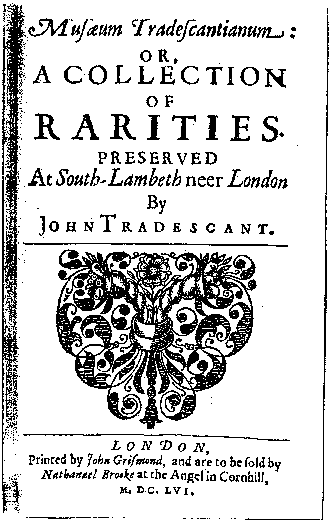 compartments had to be opened
in order to reveal what was inside, they imbued their normally hidden contents with a sense of mystery.
compartments had to be opened
in order to reveal what was inside, they imbued their normally hidden contents with a sense of mystery.
However the suggestion of something enigmatic was not a
result of the compartments alone. The contents themselves were often inherently
mysterious since many of them were valued for their mythical associations or
supposed occult properties. A room sized cabinet in London, Tradescant's Ark,
included the hand of a mermaid as well as the body of a dragon among its more
pedestrian zoological specimens. Throughout Europe, the exceedingly rare horn of
the unicorn (which was usually, in fact, from a narwhal) was the most highly
prized of all of the cabinets' denizens, not only because of its symbolic
association with the virgin birth of Christ, but also because of its power to
sweat in the presence of poisons and to transmute the harmful substances into
innocuous ones. The fossilized teeth of sharks were somewhat more common, but
they too were included for their ability to protect against harm by detecting
nearby poisons. Some cabinets contained gems that had been exquisitely carved,
and had the power to banish melancholy, cure illnesses, or win the attention of
a prospective lover. Even more astonishingly, there were collections that included objects capable of tapping forces located on the very pinnacle of the
scale of Being. One of the Hapsburgs owned a cabinet that contained intricately
faceted crystals in which he saw, not any ordinary magic, but a reflection of the ineffable power of God Himself.
The
African and Amerindian objects that found their way into the curiosity cabinets
certainly contributed to this general atmosphere of the marvelous. A greenstone
Aztec mask could be found in the studiolo of the Medici family. Its
owners had local craftsmen provide it with a mount of worked gold that lent it
something of the appearance of an Italian carnival mask, itself a remnant from a
long lost pagan culture. Along with Augustus, Duke of Saxonia, and other
aristocrats, the Medici were also avid collectors of the objects now known as
Afro-Portuguese ivories. Though these condiment sets, spoons, and hunting
horns commissioned from Benin and Sherbro
carvers often depict knights, Portuguese coats of arms, and Christian themes,
their style and some of their iconographic elements are nonetheless unmistakably
African. As a result, very unusual symbolic
fusions can occur. For example, an ivory salt cellar acquired by the Royal
Kunstkammer in Copenhagen includes a relief of a mermaid surmounted by a
crucifix. The cross holds aloft, not the body of the Savior, but that of a giant
lizard. The lid of the cellar is decorated with human figures dressed in African
clothing, and the top of the lid is draped with a languorous snake whose head
droops down in ambiguous suspension over the head of one of the Africans. In the
late sixteenth century, the Holy Inquisition attempted to discourage European
purchase of such indigenous objects, which the inquisitors, of course, believed
to be inhabited by demons.
But their efforts were largely ineffective. Collectors not only continued to
acquire items of daily use such as Indian moccasins and African powder boxes. In
many parts of Europe, they also maintained an interest in the most blatant of
“fetishes.” The cabinets of French merchants and aristocrats continued to
include “strange idols from Africa,”
and the Elector of Bavaria owned a wooden fetish from Florida.
Even the devout Antonio Giganti, secretary to the Archbishop of Bologna, owned
an important studiolo in which many idols from the New World were
prominently exhibited.
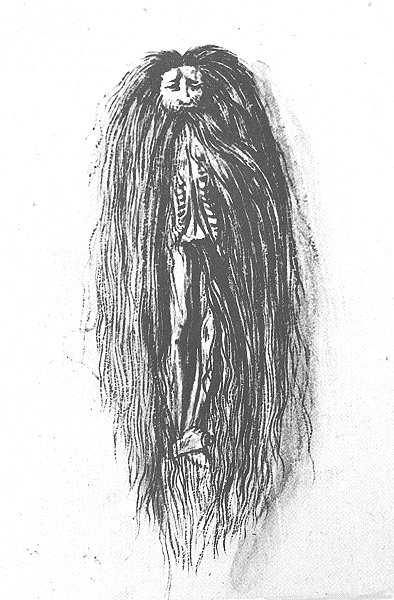
The
collectors' persistence in acquiring indigenous objects over the objections of
the Inquisition was in part a result of the Renaissance revival of interest in
magic. Marcilio Ficino, Pico della Mirandola, Giordano Bruno, and their
followers opposed the traditional Catholic suspicion of the occult arts. They
argued that the recent rediscovery of texts by Plotinus, Porphyry, and the
fabled Hermes Tristmegistus permitted the development of a morally unassailable
form of white magic, in other words, one that avoided all concourse with demons.
The Hermetic books in particular included descriptions of the procedures
Egyptian priests supposedly used to direct the energies of the stars into
statues and other talismans. Ficino and the others did not hesitate to recommend
duplication of these methods. But they insisted that the powers called up in the
process hailed, not from astral demons, as more orthodox Christians believed,
but rather from the world soul. This elder sister of our own souls that keeps
the heavens in motion, and that makes the entire universe one living and
thinking being, was first discussed in Plato's cosmological dialogue, the
Timaeus, and received further theoretical elaboration from Plotinus and the
other Neoplatonists. It was somewhat resistant to theological attack since its
existence had been accepted by some of the early Church fathers who were also
under the influence of the Platonic and Neoplatonic texts. As we pointed out in
a previous chapter, the Renaissance talismans that were created to contain and
direct the energies of the world soul by way of stellar and planetary conduits
were similar to the indigenous objects called fetishes by traditional Catholics.
Both attempted to cure illnesses and bring good fortune by capturing spiritual
forces in material containers often impressed with some kind of imagery. Due to
this functional resemblance, African and Amerindian masks and statues were
easily assimilated to the model of the Renaissance talismans when they entered
curiosity cabinets. The assimilation, however, was ambivalent. Their
identification as magical instruments reserved an important place for indigenous
objects in more than one collection. But since most native masks, statues,
paintings, and so on deviated sharply from the canons of Renaissance naturalism,
collectors often found them unsurpassingly ugly. Because they were judged to
have a grotesque appearance, they never fully shed their propensity to evoke the
demonic.
There
is an interesting reflection of this ambivalence in Shakespeare's
Tempest, though there it is played out, not in the realm of material
culture, but in the relationship between the Renaissance magus, Prospero, and
his slave Caliban, the island savage. Writing in the late sixteenth century,
Shakespeare has behind him a century of reports that had filtered into Europe
concerning the conquest of the New World. And though the island in his play has
an imprecise fictional location, it evokes the Antilles, where Columbus
first set foot on solid ground. This suggestion is especially clear in the name
Caliban, an anagram for “cannibal,” which is itself a distortion of the word the
Carib Indians used to refer to themselves. In any event, the European conqueror
of the island is not merely a colonialist; he is also a neoplatonic conjurer of
spirits. Because of his interest in the magical arts, he finds more to be of use
in the indigenous world than servile labor, and this is the cause of an inner
conflict. On the one hand, Prospero loses no opportunity to abuse the misshapen
Caliban, whose monstrous body is the result of the union of a witch with the
devil. On the other hand, the most powerful instrument of Prospero's magic is
the spirit, Ariel, who originally did the bidding of Caliban's mother. In
Shakespeare's play as in curiosity cabinets, the white magician ─ in both senses
of the term ─ is both fascinated with and horrified by the spirits of subjugated
natives.
Shakespeare may well have modeled Prospero on his
contemporary, John Dee, the renowned scholar and ambassador of the Elizabethan
court. On the basis of a study of Hermetic and Kabbalistic texts, Dee invented a
method for summoning angels by manipulating numbers and letters that had an
esoteric significance. In this way, he claimed the ability to bring angels to
visible appearance and harness their powers for such purposes as foretelling the
future. His magical equipment consisted primarily in wax seals and written
tables composed from a secret “Enochian” alphabet, but it also included an
obsidian mirror from pre-Columbian Mexico.
Throughout Mesoamerica, these polished mirrors of black volcanic glass were used
by indigenous magicians for divinatory scrying. Tezcatlipoca, the Aztec patron
god of sorcerers, is often depicted in painted books wearing an obsidian mirror
in place of the foot that he lost to the earth monster during a battle at the
creation of the world. Whether or not Dee had access to such specific
ethnographic information, he recognized the magical significance of the black
mirror in his own possession. Yet in spite of his use of the device from pagan
Mexico as well as other questionable practices, he insisted, like all
Renaissance magicians, that his work was morally and theologically blameless.
But that insistence did not prevent him from being charged with black magic
before the Privy Council, nor his library from being destroyed by an enraged
crowd.
mirror from pre-Columbian Mexico.
Throughout Mesoamerica, these polished mirrors of black volcanic glass were used
by indigenous magicians for divinatory scrying. Tezcatlipoca, the Aztec patron
god of sorcerers, is often depicted in painted books wearing an obsidian mirror
in place of the foot that he lost to the earth monster during a battle at the
creation of the world. Whether or not Dee had access to such specific
ethnographic information, he recognized the magical significance of the black
mirror in his own possession. Yet in spite of his use of the device from pagan
Mexico as well as other questionable practices, he insisted, like all
Renaissance magicians, that his work was morally and theologically blameless.
But that insistence did not prevent him from being charged with black magic
before the Privy Council, nor his library from being destroyed by an enraged
crowd.
Apart
from the specific, if ambivalent, affinity between European talismans and
indigenous fetishes, there is a more general connection between curiosity
cabinets and the magical revival. The overall division of curiosities into
artificialia and naturalia follows the Hermetic distinction
between the human being as microcosm and the natural world as macrocosm.
The person is a diminutive universe, and the universe a giant organism. And just
as microcosm and macrocosm mirror one another, so do the products that belong to
each of the domains: artificial and natural curiosities respectively. The
Renaissance magician manipulated sympathies and correspondences between the two
spheres of existence by pronouncing incantations ─ human artifacts of a sort ─
in an attempt to control natural events, or by trying to alter a client's
emotional condition by surrounding her with the appropriate plants, gems, and
animals, for example. In much the same way, owners of some of the more
comprehensive curiosity cabinets sought to demonstrate sympathies and
correspondences between artifacts and natural specimens by interspersing items
from each of the two categories and arranging them in an overall pattern. Only
the pattern varied from owner to owner. It therefore depended upon individual
powers of sensitivity and discernment rather than the imposition of any kind of
rigidly objective order.
Still, there may have been a single prototype that
guided these varied efforts at arrangement. At its origins, the curiosity cabinet seems to have been inspired by the memory theater of Giulio
Camillo.
The art of memory has a long history in the West extending back at least as far
as Cicero. It involves the visualization of an architectural space in which images are placed in the various rooms
and compartments. The images are keyed to the material to be memorized, usually
the passages of an oration. By imaginatively traversing the architectural space
in a predetermined order, the orator is able to read off the elements of an
address from the images encountered in the process. In the early sixteenth
century, Camillo adapted the art of memory to the purposes of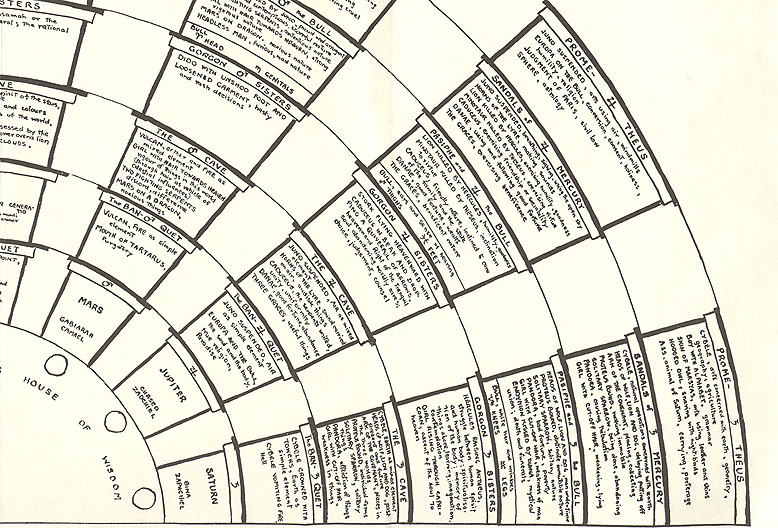 the magical
revival. He secured a small stipend from the King of France that enabled him
to construct a wooden theater. The theater rose in seven steps or grades
arranged in semicircles, each of which was identified with one of the phases in
the process of creation.
The rising grades themselves were divided by seven gangways representing the
seven planets, seven archangels, and seven attributes of God. At each of the
forty nine intersections of grades with gangways, a gate decorated with numerous
images was located. Finally, there were boxes at the foot of each gate
containing excerpts from the speeches of Cicero. The spectator stood at the base
of the seven rising grades, where the stage would have been in an ordinary
theater. From this vantage point, he was able to contemplate the whole panorama
of gates with their associated images and boxes. The mnemonic material was keyed
primarily to the images, most of which were drawn from classical mythology:
Cerberus, the Gorgon Sisters, Pasiphe and the Bull, and so on. The images in
turn were symbols for the varied manifestations of planetary forces on the
different levels of creation. The details of this scheme are very complex and
need not concern us here. The important thing is its purpose, which Frances
Yates has identified as the development of a magical memory. According to her,
the images were actually “inner talismans” that were supposed to collect
celestial influences and focus them in the human mind.
To begin with, they were to endow the adept with the ability to discourse on any
topic with the eloquence of Cicero himself.
But even more importantly, they were to allow him a comprehensive survey and
unitary grasp of the entire contents of the universe, an all encompassing
representation of the world.
the magical
revival. He secured a small stipend from the King of France that enabled him
to construct a wooden theater. The theater rose in seven steps or grades
arranged in semicircles, each of which was identified with one of the phases in
the process of creation.
The rising grades themselves were divided by seven gangways representing the
seven planets, seven archangels, and seven attributes of God. At each of the
forty nine intersections of grades with gangways, a gate decorated with numerous
images was located. Finally, there were boxes at the foot of each gate
containing excerpts from the speeches of Cicero. The spectator stood at the base
of the seven rising grades, where the stage would have been in an ordinary
theater. From this vantage point, he was able to contemplate the whole panorama
of gates with their associated images and boxes. The mnemonic material was keyed
primarily to the images, most of which were drawn from classical mythology:
Cerberus, the Gorgon Sisters, Pasiphe and the Bull, and so on. The images in
turn were symbols for the varied manifestations of planetary forces on the
different levels of creation. The details of this scheme are very complex and
need not concern us here. The important thing is its purpose, which Frances
Yates has identified as the development of a magical memory. According to her,
the images were actually “inner talismans” that were supposed to collect
celestial influences and focus them in the human mind.
To begin with, they were to endow the adept with the ability to discourse on any
topic with the eloquence of Cicero himself.
But even more importantly, they were to allow him a comprehensive survey and
unitary grasp of the entire contents of the universe, an all encompassing
representation of the world.
The
project of the memory theater, then, was to transcend the finite standpoint of
ordinary conscious awareness and to achieve a view of the world so universal in
scope and perspicuous in detail that it could only be identified with the mind
of God. The project was inspired by the Gnostic and Hermetic doctrine that the
human being is actually a fallen spark of Divinity, temporarily trapped by its
own obdurate body and by the darkness of matter in general. The point of the
magical art of memory is to return the lost soul to a consciousness of its true
status and origin, a purpose that Pico della Mirandola articulated in exoteric
form in his famous and influential, Oration on the Dignity of
Man. There is no doubt that this purpose was heretical from
a conventionally Catholic point of view. But such heresy was called for by
dramatically changing times. It was made necessary, not so much by the
rediscovery of the Hermetic texts, as by the challenges that the Age of
Exploration posed to the Western mind. In the sixteenth century, the standard
European representation of the world was undergoing a fundamental transformation
as a result of the discovery of the Americas and the ongoing penetration of
Africa. A belief in the demiurgic powers of the human imagination was
undoubtedly necessary for the confidence required to generate an entirely new
world picture.
Some
curiosity cabinets were devoted to specialized collections, but others included
objects intended to represent all elements of reality. There is considerable
evidence that the encyclopedic collections were influenced by the magical art of
memory. To take just one example, in 1562 Samuel Quiccheberg published a
treatise in Munich presenting his advice to the Bavarian Duke, Albrecht V, on
establishing an all embracing cabinet. In developing his guidelines for
classification and arrangement, he refers to Camillo's theater and
designates the curiosity cabinet a Theatrum Sapientiae.
As memory theaters in miniature, the encyclopedic cabinets were especially well
suited to developing a new representation of the world in the wake of the
voyages of discovery. Curiosities nestled in their cubbyholes like the symbols
on the gates of Camillo's theater. But the curiosities, unlike the symbols, were
potentially dynamic. They could be bought, sold, traded, and, most important of
all, rearranged. By acquiring new items from missionaries and explorers,
collectors had the power to conjure up in their cabinets a changing image of an
expanding world.
3.
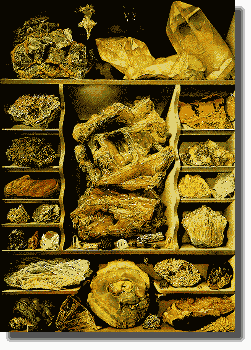 Natural curiosities were indispensable to
encyclopedic collections. After all, they represented the organic and inorganic
entities that comprise so much of the bulk of the world. But since they occupied
positions on the scale of Being inferior to the human domain, collectors valued
them less highly than artificial curiosities. This assessment was reversed when
natural history collections came into vogue in the eighteenth century, but not
because humankind was suddenly deemed unimportant. On the contrary, the new crop
of collectors saw detailed knowledge of the natural world as the only reasonable
path to the fulfillment of human desires and purposes. The triumph of natural
history collecting in the 1700s was part and parcel of the Enlightenment view
that human goals are best served by science, not metaphysical speculation.
Still, the seeds of that triumph had been planted two hundred years earlier, in
the heyday of the Renaissance.
Natural curiosities were indispensable to
encyclopedic collections. After all, they represented the organic and inorganic
entities that comprise so much of the bulk of the world. But since they occupied
positions on the scale of Being inferior to the human domain, collectors valued
them less highly than artificial curiosities. This assessment was reversed when
natural history collections came into vogue in the eighteenth century, but not
because humankind was suddenly deemed unimportant. On the contrary, the new crop
of collectors saw detailed knowledge of the natural world as the only reasonable
path to the fulfillment of human desires and purposes. The triumph of natural
history collecting in the 1700s was part and parcel of the Enlightenment view
that human goals are best served by science, not metaphysical speculation.
Still, the seeds of that triumph had been planted two hundred years earlier, in
the heyday of the Renaissance.
Although Camillo's theater undoubtedly had an impact on
Renaissance collecting, it is important not to overestimate its influence. The
theater may have shaped the encyclopedic cabinets, but it had much less to do
with the specialized ones. In particular, some early collectors of natural
curiosities did not share Samuel Quiccheberg's enthusiasm for the magical art of
memory. In the late sixteenth century, the prominent Bolognese collector Ulisse
Aldrovandi, stated that he found books on the art of memory useless,
and in fact opposed any attempt to organize collections through the imposition
of some abstractly universal scheme.
Aldrovandi, who was a professor of natural philosophy at the University
o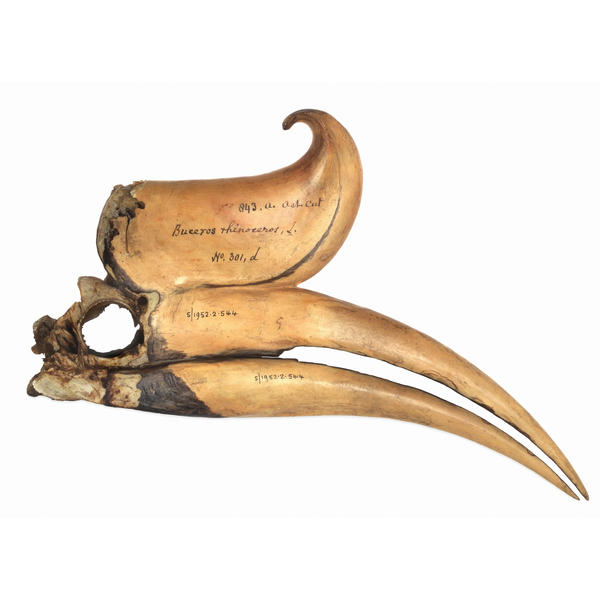 f Bologna and director of its
botanic garden, exhorted doctors and
medical students to apply themselves to the study of plants, animals, and
minerals in order to determine their specific therapeutic properties. The
studies were to be conducted on the specimens themselves and for achievable
practical ends. Aldrovandi regarded his extensive private collection of
naturalia as an instrument of empirical inquiry. True, he never interpreted such research as a passive
encounter with some unvarnished sense datum. He accepted the natural history of
both Aristotle and Pliny, and so was far from being an empiricist in the
eighteenth century, British sense. Nevertheless, from these ancient authors, he
learned the importance of such empirical methods as dissecting dead specimens
and carefully observing the behavior of living ones. For Aldrovandi, the magical
claim to comprehend the sympathies and correspondences of the universe as a
whole faded into epistemic emptiness when confronted with a painstaking and
piecemeal approach to research. For him, the purpose of the curiosity cabinet
was not to elevate the human mind to the forgotten heights of its original
divinity. Far more modestly, it was to make the widest possible range of samples
from the natural world available for expert examination and
classification.
f Bologna and director of its
botanic garden, exhorted doctors and
medical students to apply themselves to the study of plants, animals, and
minerals in order to determine their specific therapeutic properties. The
studies were to be conducted on the specimens themselves and for achievable
practical ends. Aldrovandi regarded his extensive private collection of
naturalia as an instrument of empirical inquiry. True, he never interpreted such research as a passive
encounter with some unvarnished sense datum. He accepted the natural history of
both Aristotle and Pliny, and so was far from being an empiricist in the
eighteenth century, British sense. Nevertheless, from these ancient authors, he
learned the importance of such empirical methods as dissecting dead specimens
and carefully observing the behavior of living ones. For Aldrovandi, the magical
claim to comprehend the sympathies and correspondences of the universe as a
whole faded into epistemic emptiness when confronted with a painstaking and
piecemeal approach to research. For him, the purpose of the curiosity cabinet
was not to elevate the human mind to the forgotten heights of its original
divinity. Far more modestly, it was to make the widest possible range of samples
from the natural world available for expert examination and
classification.
The
most highly prized items in Aldrovandi's collection were unusual specimens from
Africa, the Americas, and parts of Asia. To some extent, this taste for the
exotic was a proclivity he had in common with collectors influenced by
occultism. But in his case, and that of many other connoisseurs of
naturalia, a predilection for the foreign and even the bizarre pointed
more toward the science of the future than the magic of the present and past.
The great voyages of discovery profoundly altered European conceptions of
biological diversity. Estimates of the number of species existing world wide
were soon multiplied by factors of ten, one hundred, one thousand. The
burgeoning variety of living forms, directly evident in the expanding contents
of the new natural history cabinets, soon began to strain the limits of
Aristotelian and other existing systems of biological classification. The result
was a considerable degree of intellectual confusion, a state of affairs that
persisted until the middle of the eighteenth century. The theoretical chaos
ended when Linnaeus developed his taxonomic methods,
in large part on the basis of the natural history collections that Aldrovandi
and others had pioneered.
The
development of Linnaean taxonomy marked the definitive victory of Aldrovandi's
version of the curiosity cabinet over that of Quiccheberg and his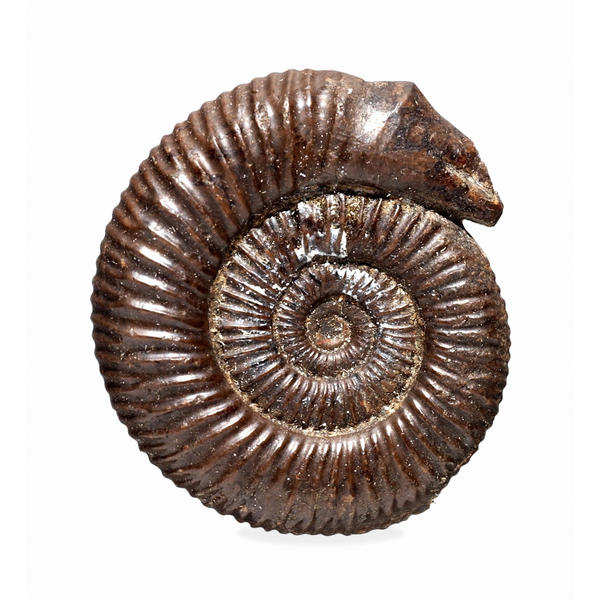 fellow Hermeticists. It provided
a systematic, yet empirically rich, schema
for categorizing the organic constituents of nature. Moreover, it made its appearance
at a time when there was increasing interest in the economic potential of the
“natural resources” located both at home and abroad. For the global
capitalist system was in the midst of its second great expansion. As the
struggle for hegemony between England and France, as well as their weaker
competitors, brought large parts of Asia, Africa, Latin America, and Oceania into one international division of labor, the forces of
agricultural production and extractive enterprise developed rapidly on a world
scale. Resource inventories were complied by both public bodies and private
individuals
as a prerequisite for such development, and here Linnaean taxonomy proved to be
extraordinarily useful. As part of the inventory process, increasing numbers of
collectors all over Europe began to
cultivate cabinets devoted predominantly,
or even exclusively, to plants, minerals, fossils, shells, and zoological
specimens, all arranged according to Linnaean standards. To take one example,
the natural history collections that existed in Venice before 1750 could be
counted on the fingers of one hand. By the final decades of the century, their number had grown to more than sixty.
fellow Hermeticists. It provided
a systematic, yet empirically rich, schema
for categorizing the organic constituents of nature. Moreover, it made its appearance
at a time when there was increasing interest in the economic potential of the
“natural resources” located both at home and abroad. For the global
capitalist system was in the midst of its second great expansion. As the
struggle for hegemony between England and France, as well as their weaker
competitors, brought large parts of Asia, Africa, Latin America, and Oceania into one international division of labor, the forces of
agricultural production and extractive enterprise developed rapidly on a world
scale. Resource inventories were complied by both public bodies and private
individuals
as a prerequisite for such development, and here Linnaean taxonomy proved to be
extraordinarily useful. As part of the inventory process, increasing numbers of
collectors all over Europe began to
cultivate cabinets devoted predominantly,
or even exclusively, to plants, minerals, fossils, shells, and zoological
specimens, all arranged according to Linnaean standards. To take one example,
the natural history collections that existed in Venice before 1750 could be
counted on the fingers of one hand. By the final decades of the century, their number had grown to more than sixty.
Most ethnographic objects harvested during this
period wound up as adjuncts to natural history collections, where many of them
indeed remain to the present day. There are
several reasons for this. To begin with, indigenous artifacts were often
acquired on the same expeditions that gathered natural history specimens. The
two arrived in Europe in the identical shipments and came onto the market at the
same time. Cook's voyages are an example. But secondly, there was something of a
survival of the encyclopedic approach to collecting when it came to recently
discovered or newly conquered regions of the world. What better way was there to
convey a unified image of exotic places than by displaying their
artificialia and naturalia alongside one another? Finally, the
Enlightenment conception of the savage as “natural man” led eighteenth century
collectors to group native artifacts with flora and fauna, even though, as we
have seen in a previous chapter, they lacked any guiding schema that could
function as an anthropological equivalent of Linnaean taxonomy.
When
scientific anthropology finally emerged in the nineteenth century, its first
home was, not the university department, but the natural history museum. As late
as 1900, an anthropologist of such unchallenged stature as Franz Boas still
found his professional employment at the Museum of Natural History in New York
City. But it was not long before ethnographic collections developed outside the
institutions that had initially harbored them. In the process, a new kind of
museum appeared.
4.
By
the early years of the nineteenth century, England had won its struggle with
France, emerging as the world's dominant military and economic power. In
the process, it underwent an industrial revolution that set the tone for the
further development of the global system. The era of a predominantly
agricultural capitalism was over. In the ensuing decades, industrial production
came to account for an ever larger share of the world market. The nations that
sought to challenge British hegemony did so by speeding up their own processes
of industrial growth. The accelerated mechanization of production required them
to secure access to vast quantities of raw materials, which eventually led to a
new period of expansion into the non-European regions of the world. By the late
nineteenth century, the scramble for colonies was on, an international melee
that ended on the battlefields of the First and Second World Wars. This age of
classical imperialism was the context in which ethnographic collections and
museums arose.
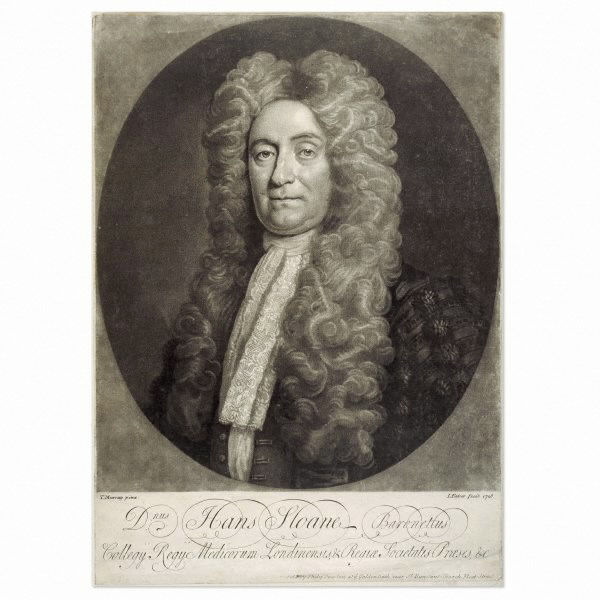 England's early advantage in ethnographic museums
is a reflection of its dominance as an imperial power. The sun never sets on the
British Museum. That august institution was created by an act of Parliament in
1753 in response to a bequest by the wealthy physician, Sir Hans Sloan.
Sloan had acquired an interest in natural history when still a boy, a hobby he
was able to pursue in the field when he became personal physician to the Duke of
Albemarle who had been appointed Governor of Jamaica. While living on the
Caribbean island, Sloan collected 800
species of plants and other specimens, which served as the nucleus of his future
holdings. When he returned to England, his
lucrative practice among the aristocracy allowed him to amass an extensive
collection that eventually amounted to some 80,000 objects. Its basis consisted
of natural history specimens, though the collection also included thousands of
coins and medals, and thousands more of books, prints, and manuscripts. At the
time of his bequest, Sloan also owned 1,125 “antiquities,” under which category
he included 351 ethnographic items, in addition to ancient Greek and Roman
artifacts. Some of the ethnographic objects can still be identified in the
Museum's current holdings. Among them are Peruvian pottery, Eskimo
snowspectacles, a moose antler comb and a bird bone spoon from New England,
thirty birchbark baskets from Hudson's Bay, and an unusual, beautifully woven
basket from South Carolina, probably Cherokee. There is also a small wooden drum
that Sloan believed to be of American Indian origin, but that was actually
brought to Virginia from Africa, or made there by a seventeenth century African
slave.
England's early advantage in ethnographic museums
is a reflection of its dominance as an imperial power. The sun never sets on the
British Museum. That august institution was created by an act of Parliament in
1753 in response to a bequest by the wealthy physician, Sir Hans Sloan.
Sloan had acquired an interest in natural history when still a boy, a hobby he
was able to pursue in the field when he became personal physician to the Duke of
Albemarle who had been appointed Governor of Jamaica. While living on the
Caribbean island, Sloan collected 800
species of plants and other specimens, which served as the nucleus of his future
holdings. When he returned to England, his
lucrative practice among the aristocracy allowed him to amass an extensive
collection that eventually amounted to some 80,000 objects. Its basis consisted
of natural history specimens, though the collection also included thousands of
coins and medals, and thousands more of books, prints, and manuscripts. At the
time of his bequest, Sloan also owned 1,125 “antiquities,” under which category
he included 351 ethnographic items, in addition to ancient Greek and Roman
artifacts. Some of the ethnographic objects can still be identified in the
Museum's current holdings. Among them are Peruvian pottery, Eskimo
snowspectacles, a moose antler comb and a bird bone spoon from New England,
thirty birchbark baskets from Hudson's Bay, and an unusual, beautifully woven
basket from South Carolina, probably Cherokee. There is also a small wooden drum
that Sloan believed to be of American Indian origin, but that was actually
brought to Virginia from Africa, or made there by a seventeenth century African
slave.
Cook's explorations added thousands of Oceanic objects
to the largely American ethnographic “antiquities” of Sloan's bequest. The
botanist Carl Daniel Solander, who accompanied Cook on his first voyage, was
actually a member of the Museum's staff at the time. Moreover, Joseph Banks, who
led the scientific team that included Solander, later became a Trustee. Through
the efforts of the two men, the British Museum was able to acquire most of the
artifacts collected on all three of the voyages.
The
Museum's ethnographic holdings continued to expand over the following
decades. But it was not until 1883, when an extensive bequest of indigenous
objects by Henry Christy was moved into the main building in Bloomsbury that the
ethnographic collection crystallized as a relatively autonomous subdivision
within the Department of British and Mediaeval Antiquities and Ethnography. A
period of rapid growth followed that organizational development. In particular,
the ethnographic division added mightily to its treasures when the Royal Navy
seized a vast quantity of bronze castings and ivory carvings as “reparations”
from one of the most sophisticated urban cultures of Africa. The objects were
taken in the course of the Benin Punitive Expedition of 1897, which ransacked
the magnificent palace of the Oba in retaliation for the earlier killing of a
British expeditionary party.
There
was never any intention on the part of Museum officials to hide or deny the
connection between the ethnographic division and England's imperial adventures.
In the second paragraph of the Museum's Handbook to the Ethnographical
Collections, published in 1910, the Keeper of the collections, Charles H.
Read wrote:
Many of the older specimens in the gallery have a
connection with British enterprise and exploration which adds considerably to
their interest: thus, the voyages of Cook, Vancouver, and others, including the
explorers who took part in the search for Franklin, are represented in the
Museum; and the magnificent collection of the London Missionary Society, now
shown in the Pacific Section, illustrates another phase of British enterprise
among uncivilized peoples, in which we may take legitimate pride.
For
most of its history, curators and trustees of the British Museum held indigenous
objects in open disdain. When that attitude finally passed, it was as much due
to the activity of the Luftwaffe as to the recognition of ethnography as a
respectable discipline. The evacuation of the Museum's treasures from their home
in Bloomsbury began in 1939, and none too
soon. Two years later, the building was badly damaged in incendiary bombing by
German airplanes. When the collections were reinstalled in the postwar years,
some were also reorganized. Only then, in 1946, did ethnography became a fully
independent department. In 1970, the ethnographic collection finally moved to a
separate building in Burlington Gardens off
Piccadilly, where it was renamed the Museum
of Mankind.
By
the third quarter of the nineteenth century, most of the large cities of
Germany, notably Berlin, Leipzig, Dresden,
and Hamburg, had ethnographic collections of exceptional character on display.
But, in an inversion of the British paradigm, the comprehensiveness of the
collections and the fine quality of many of their objects were the result of
Germany's belated entry into the competitive imperial melee, itself a function
of the dilatory character of German national unification. Germany first became a
unified nation in 1871. The Iron Chancellor Bismarck committed the new Reich to
an aggressive policy of colonial expansion in 1884. But only two years later,
when it opened to the public, the Berlin Museum für Völkerkunde already housed
nearly ten thousand African objects alone. German travelers had acquired most of
the items on trips to Sudan, Abyssinia, and the Guinea Coast.
Thus the objects were not themselves the result of conquest, but drafts on a
hoped for imperial future. All of the German ethnographic collections were
marked by such overcompensation deriving from a burning envy of England and
other advanced imperial rivals. Moreover, that compensatory complex did not
dissolve even with the onset of actual colonial conquest. In 1910-11, for
example, when the Reich was already well along in its colonizing mission, the
city of Hamburg sent an expedition to the western Pacific, which brought back
6,667 objects for its ethnographic collection, including some from the fabled
and relatively inaccessible interior of New Guinea. The buildings that housed
the Hamburg as well as Berlin collections were jammed with so many objects that
they seemed ready to burst at the seams. Ethnographers were unable effectively
to study, let alone comprehend, the wealth of material at their disposal.
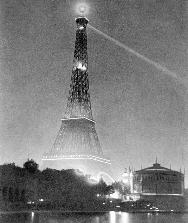 The ethnographic collections of France
developed differently than the English and German ones. They emerged from a
series of universal expositions, or world fairs, in which France celebrated the
advent of its own industrial phase by displaying, alongside other nations, its
mass produced merchandise and scientific and technological achievements, as well
as by demonstrating its ability to entertain a massified, urban public on a
truly enormous scale. Fifteen million visitors attended the exposition of 1867
alone. In the expositions, the French bourgeoisie turned its back on an older,
traditional world of established habits and long term intimacies so as to
embrace a dizzying acceleration in the tempo of change, an unprecedented
increase in technological power, and the chaotic stimuli of the newly
industrialized urban life. The commonly recognized symbol of that momentous
shift was the Eiffel Tower. An astonishing achievement of modern engineering
that lacked the old world charm of ornamentation, it was built for the
exposition of 1889, and remained the tallest building in the world for the next
half century, a monument to the age of industrial capitalism. It is true that
the first universal exposition was held not
The ethnographic collections of France
developed differently than the English and German ones. They emerged from a
series of universal expositions, or world fairs, in which France celebrated the
advent of its own industrial phase by displaying, alongside other nations, its
mass produced merchandise and scientific and technological achievements, as well
as by demonstrating its ability to entertain a massified, urban public on a
truly enormous scale. Fifteen million visitors attended the exposition of 1867
alone. In the expositions, the French bourgeoisie turned its back on an older,
traditional world of established habits and long term intimacies so as to
embrace a dizzying acceleration in the tempo of change, an unprecedented
increase in technological power, and the chaotic stimuli of the newly
industrialized urban life. The commonly recognized symbol of that momentous
shift was the Eiffel Tower. An astonishing achievement of modern engineering
that lacked the old world charm of ornamentation, it was built for the
exposition of 1889, and remained the tallest building in the world for the next
half century, a monument to the age of industrial capitalism. It is true that
the first universal exposition was held not  in Paris, but in London in 1851. The
British fair is still famous for its Crystal Palace, which transformed the new
building materials, iron and glass, into a diaphanous, faceted palace. But
France turned the British precedent into a vehicle especially suited to its
flair for dramatic self display. In the vast scale of the French expositions,
with their accumulation of crowds, elaborate buildings, and glittering
merchandise, Paris affirmed itself as both a center of science and
industry and, in the words of Walter Benjamin, as “the capital of luxury and
fashion.”
in Paris, but in London in 1851. The
British fair is still famous for its Crystal Palace, which transformed the new
building materials, iron and glass, into a diaphanous, faceted palace. But
France turned the British precedent into a vehicle especially suited to its
flair for dramatic self display. In the vast scale of the French expositions,
with their accumulation of crowds, elaborate buildings, and glittering
merchandise, Paris affirmed itself as both a center of science and
industry and, in the words of Walter Benjamin, as “the capital of luxury and
fashion.”
A
basic aspect of that affirmation of industrial power and material luxury was the
idea of a French imperial mission. All of the Paris expositions included
artifacts from the colonies devoted to promoting the idea, but three of the
fairs had particularly significant implications for the future. The first
exposition of 1855 preceded by about fifteen years the development of an
aggressive colonial policy by the national government, but it nevertheless
presciently left in its wake a MusÀ)_Àe Permanent des Colonies. The designers of
the exposition of 1878 created an additional venue for displaying the signs of
imperial domination to the enormous crowds: they established the famous museum
that was to nourish more than one generation of French artists by installing
artifacts from Africa and the Americas in the right wing of the newly
constructed Palais du TrocadÀ)_Àro. Finally, the exposition of 1889 was the most
extravagant of all in its dedication to the cause of French imperial expansion,
but also the most arresting in its depiction of radically foreign cultures. The
bourgeoisie celebrated the centenary of the French Revolution by creating a
Palais des Colonies that offered visitors full reconstructions of Tahitian and
New Caledonian villages, as well as less elaborate demonstrations of the life
and culture of such French possessions as Madagascar, Martinique, and Tonkin
(now Vietnam), the last of which had recently been annexed from China as the
result of a bloody war. Moreover, the reconstructed villages were populated with
real representatives of the colonial subject populations. The hapless natives
had been imported to entertain the exposition's visitors with songs, dances, and
ritual masquerades. They were then supposed to return to their homes, as the
journalist E. Monad wrote approvingly at the time, with “the impression that
France is a rich and powerful country, whose moral superiority they recognize
and whose authority they will be less and less tempted to contest.”
Among
the millions of visitors to the Palais des Colonies, two in particular are
worthy of note. The impressionist painter, Camille Pissarro (then actually in
his post-impressionist phase) was unable to resist attending, though he was
repelled by the pavilion's blatant imperialist arrogance. Pissarro's friend and
former student, Paul Gaugin also visited. It was there that he resolved to leave
France for Tahiti.
The TrocadÀ)_Àro and the Palais des Colonies were a homage to the nation's
imperial destiny. But they were built just in time for the avant-garde to
arrive.
A few
decades before these aesthetic innovators attended the French exposition, a
German émigré in his thirties took out a library card at the British Museum. As
ethnographic objects were piling up in the Department of Antiquities, he began
work on a multivolume analysis of the capitalist mode of production. One of its
most important sections is titled, “On the Fetish Character of Commodities and
Its Secret.”
Larencich-Minelli, Laura; “Museography and Ethnographical Collections in Bologna
Duing the Sixteenth and Seventeenth Centuries” The Origins of Museums, ed.
Oliver Impey and Aurthur MacGregor (Oxford: Clarendon Press, 1985) p. 20
 The primitive
accumulation of capital that lay at the origins of the modern world system in
the sixteenth century involved the transference of material resources from
Africa and the Americas to Europe. Among those resources were objects that are
now exhibited in museums and sold to collectors as works of indigenous art. The
objects reached their destination at a time when it was undergoing a complicated
process of cultural transformation. Much of Europe was fully in the grip of the
Renaissance. Though that movement was based on a rediscovery of Greek and Roman
sources of learning and models of visual representation, it was not merely
backward looking. It also clothed art with a grandeur that had no precedent in
either ancient or mediaeval times. Sculptors and painters made a successful
claim to a social status more elevated than that of ordinary craftsmen. They
shed their traditional association with crude manual labor and insisted that
their activities and products were equivalent in excellence to those of the more
highly regarded human studies, or “humanities,” such as grammar, history,
poetry, and philosophy. This bid for respectability on the part of visual
artists was accepted by a layer of the mercantile and financial bourgeoisie who
at first commissioned artworks for churches and public buildings as well as
private quarters, and then began to purchase already existing works in the
marketplace. And so art was converted into wealth at the very moment of its
birth.
The primitive
accumulation of capital that lay at the origins of the modern world system in
the sixteenth century involved the transference of material resources from
Africa and the Americas to Europe. Among those resources were objects that are
now exhibited in museums and sold to collectors as works of indigenous art. The
objects reached their destination at a time when it was undergoing a complicated
process of cultural transformation. Much of Europe was fully in the grip of the
Renaissance. Though that movement was based on a rediscovery of Greek and Roman
sources of learning and models of visual representation, it was not merely
backward looking. It also clothed art with a grandeur that had no precedent in
either ancient or mediaeval times. Sculptors and painters made a successful
claim to a social status more elevated than that of ordinary craftsmen. They
shed their traditional association with crude manual labor and insisted that
their activities and products were equivalent in excellence to those of the more
highly regarded human studies, or “humanities,” such as grammar, history,
poetry, and philosophy. This bid for respectability on the part of visual
artists was accepted by a layer of the mercantile and financial bourgeoisie who
at first commissioned artworks for churches and public buildings as well as
private quarters, and then began to purchase already existing works in the
marketplace. And so art was converted into wealth at the very moment of its
birth.
 Most of the
collections were housed in the curiosity cabinets that had made their first
appearance in the sixteenth century. The Italian term is studiolo, the
French, cabinet de curiosites, and the German, Wunderkammer,
chamber of wonders. The German word, which is the most expressive of all,
indicates something of the aura of mystery
that enveloped the cabinets and their contents, at least at the time of the
Renaissance. The cabinets as physical containers ─ the term also referred to the
collections they housed ─ sometimes took the form of spacious closets or even
entire rooms. But they most often appeared as free standing cupboards
masterfully constructed from fine woods. In
the most sumptuous examples, they were made of ebony, inlaid with jasper and
lapis lazuli, draped with canopies studded with jewels, and decorated with
alabaster columns.
Most of the
collections were housed in the curiosity cabinets that had made their first
appearance in the sixteenth century. The Italian term is studiolo, the
French, cabinet de curiosites, and the German, Wunderkammer,
chamber of wonders. The German word, which is the most expressive of all,
indicates something of the aura of mystery
that enveloped the cabinets and their contents, at least at the time of the
Renaissance. The cabinets as physical containers ─ the term also referred to the
collections they housed ─ sometimes took the form of spacious closets or even
entire rooms. But they most often appeared as free standing cupboards
masterfully constructed from fine woods. In
the most sumptuous examples, they were made of ebony, inlaid with jasper and
lapis lazuli, draped with canopies studded with jewels, and decorated with
alabaster columns.

 mirror from pre-Columbian Mexico.
mirror from pre-Columbian Mexico.

 f Bologna and director of its
botanic garden, exhorted doctors and
medical students to apply themselves to the study of plants, animals, and
minerals in order to determine their specific therapeutic properties. The
studies were to be conducted on the specimens themselves and for achievable
practical ends. Aldrovandi regarded his extensive private collection of
naturalia as an instrument of empirical inquiry. True, he never interpreted such research as a passive
encounter with some unvarnished sense datum. He accepted the natural history of
both Aristotle and Pliny, and so was far from being an empiricist in the
eighteenth century, British sense. Nevertheless, from these ancient authors, he
learned the importance of such empirical methods as dissecting dead specimens
and carefully observing the behavior of living ones. For Aldrovandi, the magical
claim to comprehend the sympathies and correspondences of the universe as a
whole faded into epistemic emptiness when confronted with a painstaking and
piecemeal approach to research. For him, the purpose of the curiosity cabinet
was not to elevate the human mind to the forgotten heights of its original
divinity. Far more modestly, it was to make the widest possible range of samples
from the natural world available for expert examination and
classification.
f Bologna and director of its
botanic garden, exhorted doctors and
medical students to apply themselves to the study of plants, animals, and
minerals in order to determine their specific therapeutic properties. The
studies were to be conducted on the specimens themselves and for achievable
practical ends. Aldrovandi regarded his extensive private collection of
naturalia as an instrument of empirical inquiry. True, he never interpreted such research as a passive
encounter with some unvarnished sense datum. He accepted the natural history of
both Aristotle and Pliny, and so was far from being an empiricist in the
eighteenth century, British sense. Nevertheless, from these ancient authors, he
learned the importance of such empirical methods as dissecting dead specimens
and carefully observing the behavior of living ones. For Aldrovandi, the magical
claim to comprehend the sympathies and correspondences of the universe as a
whole faded into epistemic emptiness when confronted with a painstaking and
piecemeal approach to research. For him, the purpose of the curiosity cabinet
was not to elevate the human mind to the forgotten heights of its original
divinity. Far more modestly, it was to make the widest possible range of samples
from the natural world available for expert examination and
classification. fellow Hermeticists. It provided
a systematic, yet empirically rich, schema
for categorizing the organic constituents of nature. Moreover, it made its appearance
at a time when there was increasing interest in the economic potential of the
“natural resources” located both at home and abroad. For the global
capitalist system was in the midst of its second great expansion. As the
struggle for hegemony between England and France, as well as their weaker
competitors, brought large parts of Asia, Africa, Latin America, and Oceania into one international division of labor, the forces of
agricultural production and extractive enterprise developed rapidly on a world
scale. Resource inventories were complied by both public bodies and private
individuals
fellow Hermeticists. It provided
a systematic, yet empirically rich, schema
for categorizing the organic constituents of nature. Moreover, it made its appearance
at a time when there was increasing interest in the economic potential of the
“natural resources” located both at home and abroad. For the global
capitalist system was in the midst of its second great expansion. As the
struggle for hegemony between England and France, as well as their weaker
competitors, brought large parts of Asia, Africa, Latin America, and Oceania into one international division of labor, the forces of
agricultural production and extractive enterprise developed rapidly on a world
scale. Resource inventories were complied by both public bodies and private
individuals England's early advantage in ethnographic museums
is a reflection of its dominance as an imperial power. The sun never sets on the
British Museum. That august institution was created by an act of Parliament in
1753 in response to a bequest by the wealthy physician, Sir Hans Sloan.
England's early advantage in ethnographic museums
is a reflection of its dominance as an imperial power. The sun never sets on the
British Museum. That august institution was created by an act of Parliament in
1753 in response to a bequest by the wealthy physician, Sir Hans Sloan.
